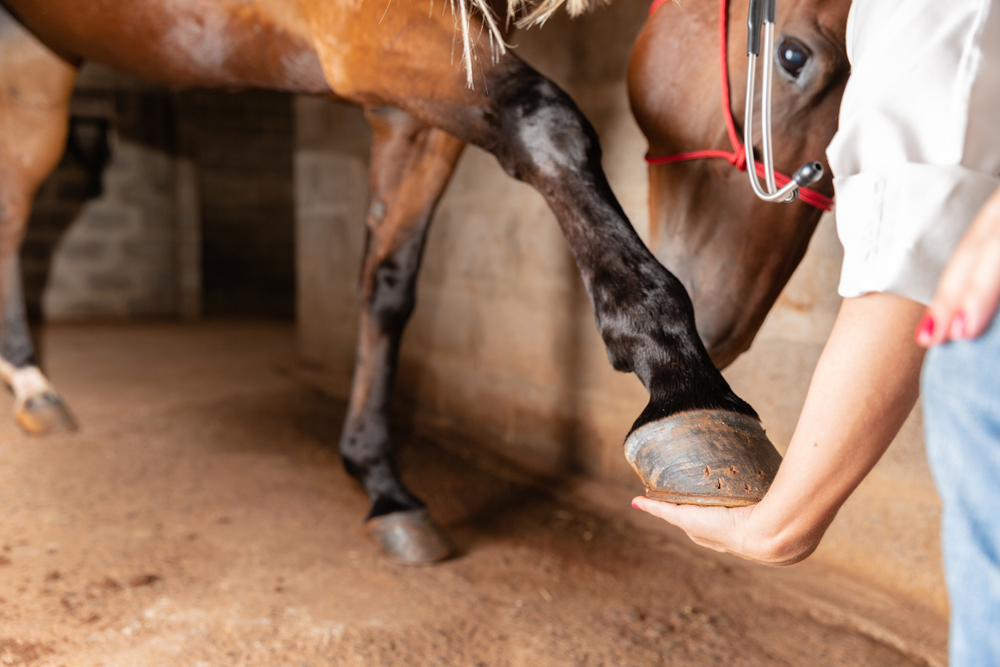Tuesdays with Tony
What is EPM?
EPM stands for Equine Protozoal Myeloencephalitis. Breaking this down into normal person-speak instead of doctor-speak, it means a small organism called a protozoa gets in the brain and/or spinal cord and causes inflammation. There are two protozoa commonly associated with EPM. These are called Sarcocystis neurona and Neospora hughesi. These little buggers are just about everywhere in the environment. They use a variety of small mammals and birds to mature until they are ready to head to a opossum, who then poops out eggs of S. neurona and N. hughesi so that those same small animals can eat them and get infected again. Most of the time the goal is to not overly affect the animals involved while carrying out your life cycle. This keeps your hosts happy, and able to continue being a good place for you to live.
Enter horses, because horses are often bad at life. On rare occasions in horses, the organism gets into the brain or spinal cord. This also happens with diseases like Eastern Equine Encephalitis, and West Nile Virus. They aren’t supposed to get into the central nervous system. When they do, they can’t replicate like they’re supposed to, which means they can’t complete that great circle of life. The important thing to know is that this happens in less than 1% of horses exposed to EPM. Read that again: Less than 1% of exposed horses!
What Does an EPM Horse Look Like?
My Docs talk to lots and lots of people who are sure their horse has EPM because of behavior changes, or poor performance, or lameness, or any of a million different things. What EPM horses most commonly look like is muscle loss in one spot. Because EPM most commonly affects a spot in the spinal cord, it stops the signal coming from the brain to a muscle. That signal also tells the muscle to stay all muscley and pumped up. When the signal stops, the muscle goes away, or atrophies.
For EPM horses, this occurs in one particular area, and only on one side. If you think about it, that makes sense. The organism won’t line itself up perfectly on the centerline of the spinal cord and cause even muscle loss on both sides. If it is affecting a big enough area to hit both sides of the body, it will be way worse on one side than the other. This is a hallmark of EPM horses. They are never symmetrical. Almost always, only one side of the body is affected. In the rare case both sides are affected, one side will be way worse than the other.
This means the first clue for my Docs is a sudden area of muscle loss. Some horses aren’t as obvious, and may present with subtle neurological signs like tripping, or sudden difficulty turning one direction or the other. Again, my Docs are going to look for areas of muscle wasting associated with these signs. They’re also going to do a very thorough lameness and neurologic exam. EPM horses will display neurological symptoms as opposed to lameness symptoms. This can sometimes take a lot of pushing, pulling, walking in weird ways, and putting horses in odd positions to determine. Luckily, my Docs are persistent.

Testing for EPM
Here is where the really sticky widget comes in. Conclusive testing for EPM simply can’t be done by blood test, and here’s why: if the blood test is positive, it just means your horse has been exposed to EPM, it doesn’t mean it’s in their brain or spine. If the blood test is negative, it means your horse hasn’t been exposed. In many areas of the United States, it is highly, highly unlikely your horse has not been exposed to EPM. The organism is everywhere.
“But Tony,” you say. “Does this mean there isn’t a conclusive test?” Never fear, testing can be done. But: it does require a spinal tap. This can be done as a standing procedure in 99.9% of horses. And yes, it does have to be a spinal tap. You see, the fluid around the brain and spine is special. It has huge barriers to entry from the rest of the body. You may have heard of the blood-brain barrier. That’s what I’m talking about. This means the test is only positive if the organism is actually in the brain or spinal cord. Exposure to the organism in the usual fashion won’t cause high levels in the spinal fluid. So: a spinal tap is the only way to be sure of your results.
Is it Treatable?
The short answer is yes. Very nearly all the time is the longer answer. For most horses, a diagnosis of EPM means a round of drugs to kill the protozoa. They get a strong version for at least 30 days, followed by a weaker version for several months. Marquis and Protazil are the most common drugs used for that first 30 days. Both do a great job of really hitting the protozoa hard. From there, the follow-up medication is used to actually kill the little buggers. This plan works great for most horses.
Here’s the deal for any horse with a neurologic disease: we can only improve them one grade from their worst grade. The grades are numbered 0-5. Numbers 0-2 can usually be ridden. This means if my Docs give your horse a score of 4, they will likely improve to a 3 with the very best in therapy, AND a good response from the horse’s own immune system, which means they will be a danger to ride. This is why I said they respond nearly all the time. Sometimes the organism gets into a very, very bad spot, and/or the body responds with a big huge inflammation response, and a whole lot of damage is done in a very short amount of time. These are the worst case EPM scenarios that no veterinarian or horse owner wants to deal with.
But My Horse Felt Better with Drugs!
Time for a giant cat pet peeve. My Docs hear this All.The.Time. My horse got better while on EPM treatment. Yep, they sure did. Every one of the medications used to treat EPM have what is known as anabolic effects. That means they work like those steroids the pro-athletes aren’t supposed to take. They aren’t as strong as the big, bad steroid injections, but they still have moderate effects. Of course your horse feels better! They were getting juiced! This my horse felt better statement is often followed by, they felt worse when they came off EPM meds, so they must have it. Now you know the real reason they felt better, and the real reason they felt worse when they stopped medication. It had nothing to do with EPM.
The moral of my tale this week is that EPM, as a cause of neurological symptoms, is not all that common. If your horse is having neurologic signs or poor performance issues, the best place to start is a good thorough physical exam, followed by a good thorough lameness exam. This gives my Docs the best chance to recommend diagnostics to determine the real underlying cause. Once they know the true problem, they can target treatments and rehab protocols to help you and your horse get back to doing what you love. If you want to see what a neuro exam is like, check out this amazing video my docs made for you!
Until next week,
~Tony
P.S. If you liked that neuro exam video, there’s more where that came from! Check out my YouTube Channel for dozens and dozens of videos, as well as seminars, how-to tutorials, ASMR videos, and more!
Tuesdays with Tony is the official blog of Tony the Clinic Cat at Springhill Equine Veterinary Clinic in Newberry, Florida. If you liked this blog, please subscribe below, and share it with your friends on social media! For more information, please call us at (352) 472-1620, visit our website at SpringhillEquine.com, or follow us on Facebook!
[jetpack_subscription_form title="Subscribe to Whinny's Wisdoms"]

